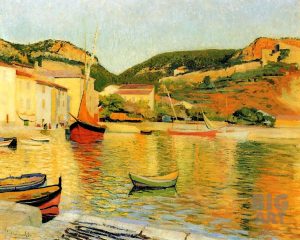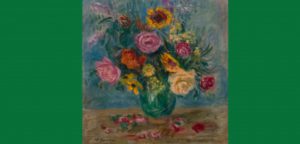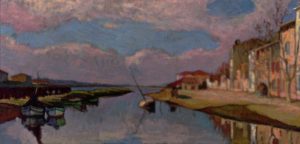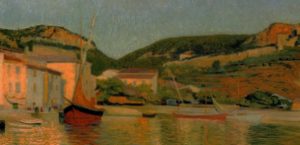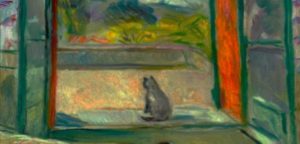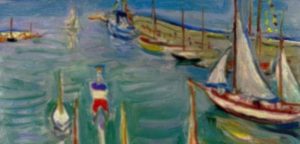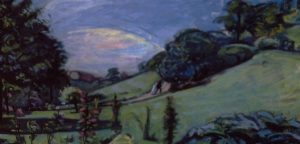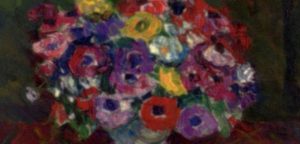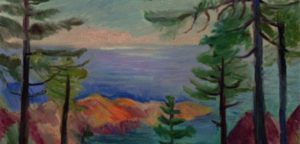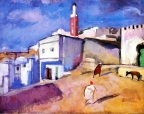Charles Camoin was born on the 23rd of September in 1879 in Marseille, France.
1879 - 1965
Charles Camoin
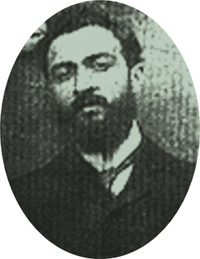
description
A French artist, a representative of Fauvism in painting. Known for his landscape works.
The father of Charles had a business of supplying varnishes and paints. After his death in 1885, the future artist and three other children were under the care of his uncle and lived alternately in Marseilles and Paris. He attended art classes at the School of Fine Arts in Marseilles.
Charles Camoin was one of those who in the 1890s studied at the studio of Gustave Moreau, was close friends with Henri Matisse, and later joined Fauvists. The artist kept in with such outstanding Impressionists as Claude Monet, Paul Cezanne and Auguste Renoir and participated in many art exhibitions, including the famous “Armory show” in the United States. In 1955, the President of France, René Coty, awarded Camoin for his contribution to French art. The artist lived a long and fruitful life, leaving behind a large number of remarkable landscapes and portraits, executed in a bright individual style.
Key Ideas:
– Charles Camoin was one of those young and talented artists who in the early twentieth century were in search of a new style and principles in painting. Like his associates from the Fauvist circle, he gave the greatest importance to his color and constantly worked on improving his own color palette. Having met like-minded people, such as Henri Matisse, Henri Manguin and Georges Rouault, he became one of Fauvists – the so-called “wild” artists who made revolution in painting at the Autumn Salon of 1905.
– Despite the similarity of the artistic style, the paintings of Camoin differ somewhat from the works of his comrades. First of all, by the artist’s color that is not much saturated and bright, as well as by increased attention to lighting. The choice of Camoin often stops on the themes of nature, ships and ports, as well as naked females in the interior, which was typical for other Fauvists.
– His work does not have a social orientation or internal conflicts. They depict a calm and measured life, recreation and entertainment, the beauty of nature.
– After 1915, the style of Camoin undergoes significant changes. He began to pay more attention to lighting in his paintings, as well as the interaction of light and different colors. At the same time, the palette of the artist remains as bright, rich and juicy as before. At the end of his life, Charles Camoin creates wonderful landscapes, filled with the sun, a sense of freshness and the purity of nature.
1879
1898
1900
1903
1905
1908
1913
1919
1921
1965
The birth of the artist
Enrolled Gustave Moreau’s class
Enrolled Gustave Moreau’s class, where Matisse, Marke and Manguin had already studied.
Entered the military service
Entered the military service, which lasted three years. During the service, he met P. Cezanne, whom he kept in with until the artist’s death in 1906.
Presented his works at the Salon of Independent and Autumn Salon
Presented his works at the Salon of Independent and Autumn Salon. Gradually became famous in art circles. The following year he made a creative trip to Italy. Visited Rome, Naples and Capri, where he painted many landscapes in bright and expressive style.
Participated in the VII Autumn Salon
Participated in the VII Autumn Salon with Matisse, Manguin, Derain and others. Thanks to this exhibition, the world discovered Fauvism.
The first individual exhibition of the artist
The first individual exhibition of the artist was held at the gallery of a young collector of German origin, Daniel Kanweiler.
Accompanied Matisse in one of the Moroccan trips
Accompanied Matisse in one of the Moroccan trips. Visited Tangier and spent the winter there.
He settled in Paris
After a break related to the war, he settled in Paris and rented a studio in Montmartre.
Bought a house in Saint-Tropez
Bought a house in Saint-Tropez, where he continued to work on landscapes, portraits, still lifes.
The death
He died on the 20th of May in 1965 in Paris.

